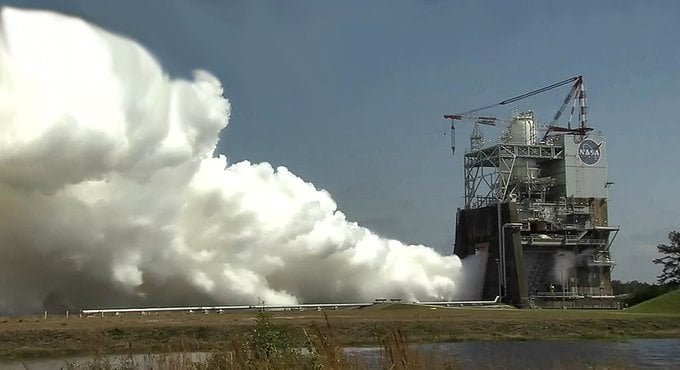
Engineers carried out a critical hot fire engine test firing with the first new engine controlling 'brain' that will command the shuttle-era liquid fueled engines powering the inaugural mission of NASA's new Space Launch System (SLS) megarocket.
Continue reading

There are so many cool astronomical sights to see in late March including Mercury and a brand new comet!
Continue reading

Europa is fine and all, but where we really need to go is Saturn's moon Titan. Let's look at some cool ideas for probes to fully explore this world.
Continue reading

Juno will perform its 5th flyby of Jupiter, Monday, March 27, at 1:52 a.m. PDT. Prepare yourself for some fantastic images.
Continue reading

CAPE CANAVERAL AIR FORCE STATION, FL - The second round of March Launch Madness continued with the thunderous nighttime blastoff of a ULA Delta IV rocket powering a super swift military communications satellite to orbit in a collaborative effort of U.S. Allies from North America, Europe and Asia and the U.S. Air Force.
Continue reading

Watch several dozen stars in the center of our galaxy circle a massive, black "nothing."
Continue reading

A new study released by a team of international scientists has offered another explanation for Recurring Slope Lineae on Mars, one which doesn't rely on the existence of water.
Continue reading

Synlight, the world's largest artificial Sun, will help German researchers extract hydrogen fuel from water using solar energy.
Continue reading

Images presented at the 48th Lunar and Planetary Science Conference this week showed the first indication of gravity waves around the Martian equator.
Continue reading

KENNEDY SPACE CENTER, FL - The fierce competition for lucrative launch contracts from the U.S. Air Force just got more even intense with the announcement that SpaceX outbid arch rival United Launch Alliance (ULA) to launch an advanced military Global Positioning System (GPS III) navigation satellite to orbit in approx. 2 years.
Continue reading

If the results in a new study are accepted, the dinosaur family tree will be getting overhauled.
Continue reading

Continue reading

A routine check by the Curiosity science team revealed that breaks have formed in the rover's left middle wheel since they last checked in January of 2017.
Continue reading

You'd think Saturn has all the luck, with its awesome rings. But it turns out, living on a planet with rings has consequences, like an impending global apocalypse.
Continue reading

SpaceX and NASA have identified 4 possible locations for the first Dragon journey to Mars in 2020.
Continue reading

Continue reading

Recently-released images from the Rosetta space probe show how the surface of Comet 67P/Churyumov-Gerasimenko changes over time
Continue reading

Researchers from the Large Hadron Collider beauty experiment (LHCb) have announced the discovery of five new particles, which could shed light on what holds atoms together.
Continue reading

Continue reading

Professor Stephen Hawking has been offered, and has accepted, a trip into sub-orbital space on Richard Branson's Virgin Galactic Spacecraft.
Continue reading

 Universe Today
Universe Today


















